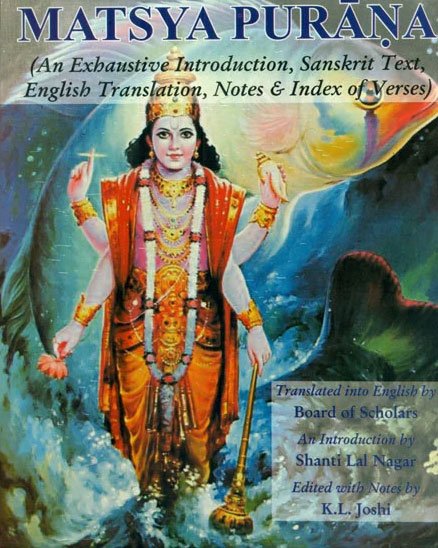The Matsya Purana (critical study)
by Kushal Kalita | 2018 | 74,766 words | ISBN-13: 9788171103058
This page relates ‘myth of Shiva-Parvati and demon Tarakasura’ of the English study on the Matsya-purana: a Sanskrit text preserving ancient Indian traditions and legends written in over 14,000 metrical verses. In this study, the background and content of the Matsyapurana is outlined against the cultural history of ancient India in terms of religion, politics, geography and architectural aspects. It shows how the encyclopedic character causes the text to deal with almost all the aspects of human civilization.
Part 1c - The myth of Śiva-Pārvatī and demon Tārakāsura
The mythical story of Lord Śiva and Pārvatī, the birth of their son Kārtikeya and the killing of Tārakāsura by Kārtikeya is well narrated in the Matsyapurāṇa also. Tārakāsura, the valiant demon was born of Vajrāṅga and Vārāṅgī after a great austerity done by Vajrāṅga. From the moment of his birth, Tārakāsura proved himself to be very powerful who started severe penance with a view to acquire more power. Being pleased Lord Brahmā granted a boon to the demon that the later would die in the hands of a seven days’ old baby.[1] Tārakāsura became powerful by the grace of Brahmā and started a battle with the gods for reaching heaven. Then there commenced a fierce war between the devas and dānavas.[2]
The devas being defeated in that war approached Brahmā for help. Then Brahmā told them about the boon he granted to Tārakāsura and also told that the baby was not yet born. The baby would be born of Śiva who was without a consort at that moment. Brahmā told them that Pārvatī, the daughter of king Himālaya would be his wife from whom a son would be born and would kill Tārakāsura.[3] But Śiva was engrossed in penance after the death of his first wife Satī and was not at all interested in taking any one else as his wife. Pārvatī, the daughter Himālaya was actually Satī in her previous birth. She also wanted to have Śiva as her husband in this birth and as such started penancefor this purpose. Indra sent Madana, the god of love to arouse love in the heart of Śaṅkara by some means. But the strong mind of Lord could not be shaken anyway and ultimately Madana was burnt into ashes by the wrath of Mahādeva.[4]
At last by practicing penance Pārvatī was able to win the heart of Śiva who accepted her as his consort on an auspicious day. A thousand years passed when Lord was enjoying the company of Pārvatī. Then Agni was appointed by the Gods to enquire about Śiva. In the form of a parrot, Agni saw the union of the pair through an opening for which he had to swallow the semen-virile of Mahādeva holding it in his palms. Agni gratified the devas with this in return when the semen-virile of the Lord gushed out of their stomachs and flowed close to the residence of Śiva where it formed into a pool of melted golden colour where the golden lotuses sprang up and birds of numerous varieties began to chirp there.[5]
After hearing the fame of that pond Pārvatī reached there and after sporting she felt inclined to drink its water when the Kṛttikās just finished their bath. They let Pārvatī drink the water with the condition that by virtue of that water when Pārvatī would beget a son he would be named after the names of the Kṛttikās. Pārvatī agreed to this and quaffed the water offered by the Kṛttikās. Then a son was born out of the right side of Her abdominal cavity who was lustrous like the Sun known as Kumāra, the destroyer of Tārakāsura.[6]
Footnotes and references:
[1]:
, 148.23
[2]:
,149-153
[3]:
, 154.47-54
[4]:
, 154.238-247
[5]:
, 158.23-28
[6]:
Ibid., 158.29-41
